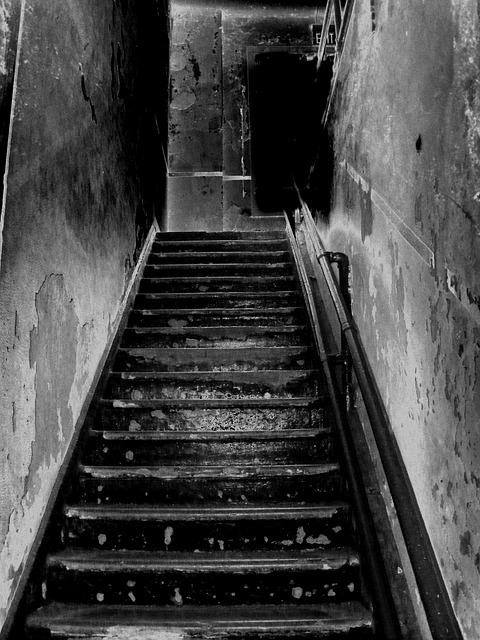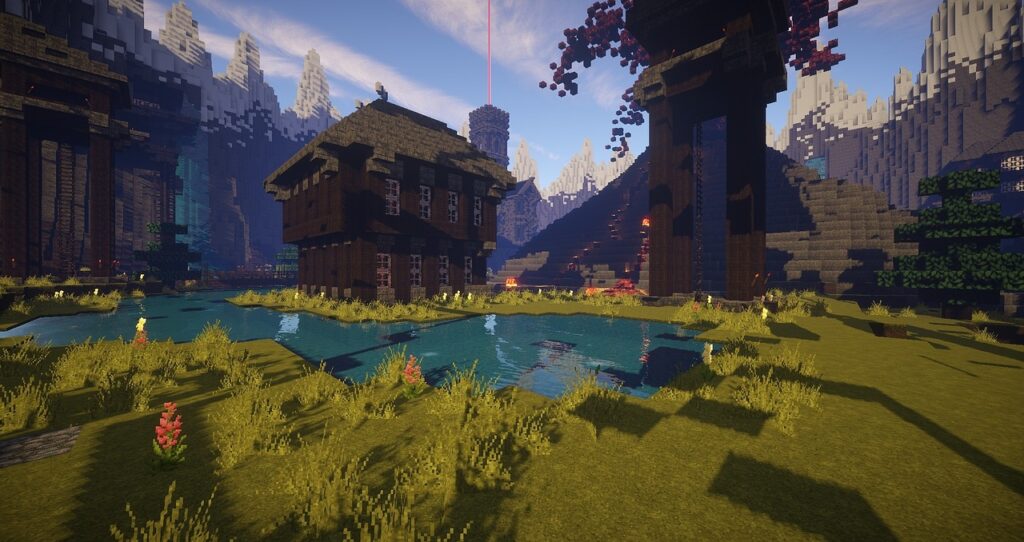Los Angeles celebrates Halloween better than any other city on Earth. Maybe it’s because so many Hollywood special effects artists live here, or because there are so many theme park enthusiasts who create their own home-made attractions. Or perhaps it’s because LA is home to many famous Halloween-o-philes including Tim Burton, Danny Elfman, and Guillermo Del Toro. Whatever the reason, there is something special about Los Angeles at Halloween time.
Every year at Halloween, instructors from the New York Film Academy (NYFA) Game Design school give the same advice: If students really want to learn some great lessons about level design, they should visit a haunted house. Not a real haunted house, but one of the dozens of fabricated haunted houses that can be found around the greater Los Angeles area during the Halloween season.
It doesn’t matter if it is an elaborate one like Disneyland’s Haunted Mansion, one of the many walk-through mazes at Knott’s Scary Farm, or a neighborhood haunt, there is a lot to learn from these haunted houses.
Here are seven scary hints from Halloween Haunts to make the most out of your spooky video game levels:
- The three S’s.
While an amateur horror level designer might only concentrate on creating scares for their haunted level, there are actually three ways to engage a player: Story, Scares, and Spectacle. Use story to capture the player’s curiosity. A strong story will make the player want to see “what happens next” and continue their way through a level. Spectacle are those epic moments that will dazzle and impress the player, making the player say “That was amazing! I wonder what’s next?”
Scale often plays a big part in epic-ness. The bigger, the better! Scares actually slow down the player as they creep their way through a level, especially if they think a scare is coming. However, if you can engage your player with story or distract them with spectacle, they won’t see the scares coming!

- Foreshadowing.
While many horror movies and games rely on jump scares and shocks, the best scares come when the player is actually expecting them. The horror game demo P.T. on the Playstation 4 might be the scariest game ever made, but it isn’t frightening just because the game looks and sounds scary.
It’s scary because the player knows they have to pass by that stupid bathroom door yet again and something horrible is going to happen when they do. The anticipation is what makes the game terrifying.
- Sound is your ally.
Nothing unsettles a player like sound. Blowing wind, the creak of an old house, the scrape of a foot along the floor. Use sound effects to not only to set the mood and augment scares, but also to foreshadow them. Think of how sound is used in the Friday the 13th video game to announce the presence of the murderous Jason. Once the player associates a music cue or sound effect with an upcoming scare, watch them start to panic!
- Use sense.
Players can’t use their sense of smell or touch when playing a video game. Horrific environments like filthy or blood-splattered rooms lose its impact if the player can’t smell or feel it. Limit these types of locations to maximize their impact, or at least have the player character react to them to help cue the player that this is a gross place to be.
- Limit the field of view.
Players get nervous when they can’t see what’s ahead of them. Use darkness and dense fog to obscure players’ field of view. Or if you are inside, corners are a great way to hide what’s coming next. There might be something horrible lurking right around the corner…

- Spread out your scares.
Fight the temptation to fill your level with wall-to-wall scares. The anticipation of a scare is much more frightening to a player. However, avoid predictability with your spacing.
For example, you might want to have a player move through two empty rooms before encountering a scare. Then switch it up to frighten them after three rooms, and then change it and frighten them in the next room. Your player will be expecting to get scared, but they will still be surprised when it happens.
Rhythm is the key to good scares. At the end of the level, you should ramp up your horror to a frightening conclusion; either let the player escape or lure them to their doom!
- Scares come from diagonals.
Haunted house experts have revealed that a guest is more frightened when a scare comes from an angle rather than straight on. The reason? Evolution has honed a human’s peripheral vision to watch for danger that comes from behind and the sides of a person. When a danger “appears” from out of nowhere, the result is much more startling!
The best way to learn more from a Halloween Haunt is to experience one for yourself! If you can overcome your fear long enough to take note on how these fear-masters use psychology to maximize their scares, you too will be making scary levels like a pro!
Our Game Design students work on a variety of projects across digital game design, 3-D art, video game storytelling, and graphic design. Visit our Game Design Discipline page to learn about our game design programs, curriculums, and hands-on projects.